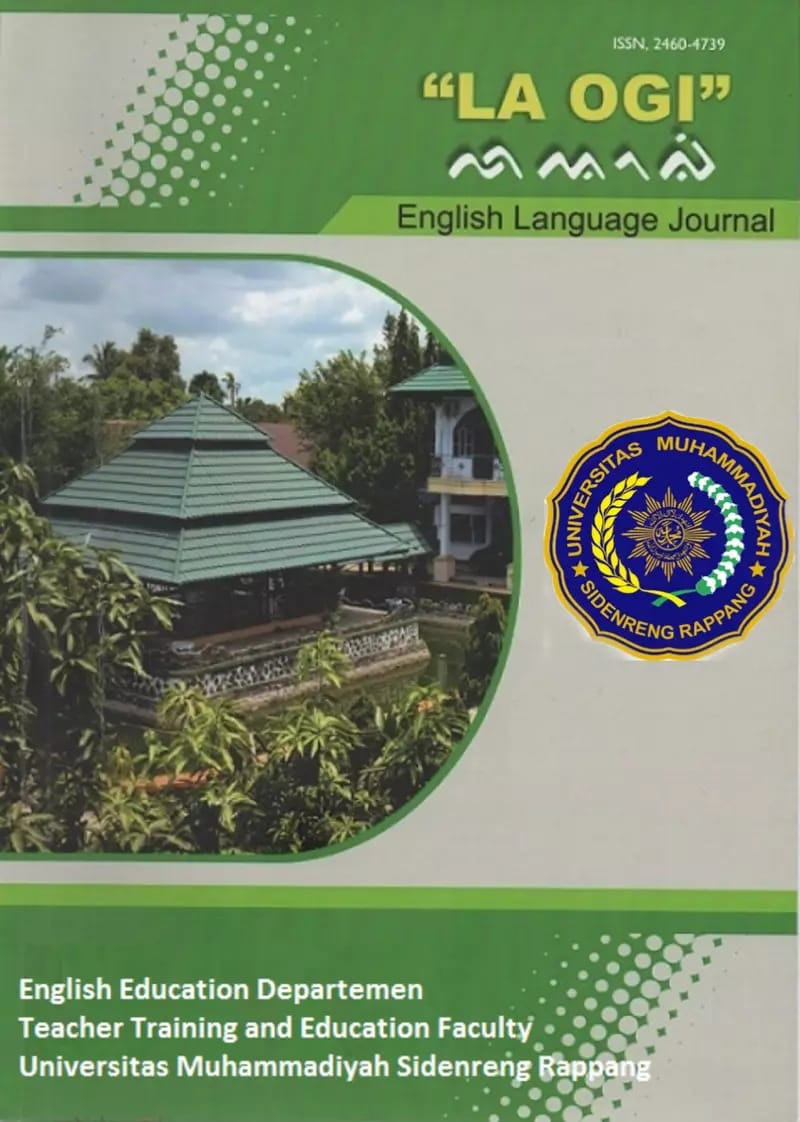The Implementation of Creative Teaching in Literature Class in English Education Department Universitas Ahmad Dahlan Yogyakarta
Abstract
A lecturer or teacher is required to be very creative in order to make students motivated to learn. This study aims to explain the creative teaching that can be applied in literature classes in the English Education Department of Universitas Ahmad Dahlan. Moreover, this study also will explore the improvement of students’ motivation by implementing creative teaching in literature classes of English Education Department of Universitas Ahmad Dahlan.
This research is a descriptive study. Observation is the initial activity that will be carried out in this study, and the data from this study were collected through a process of observation to find out its usefulness to students’ motivation for creative teaching in literature classes.
The expected outcome of this research is that creative teaching can be applied well in the literature class at the English Education Department of UAD. Also, the positive benefits that can be learned from the implementation of creative teaching are the availability of materials in the form of podcasts and various activities in the teaching of literature class such as a gallery walk, creative writing, jigsaw, group discussions, role play, and others. Students’ motivation is pretty good for the implementation of these activities.
References
Anonym. (1989). TEFL/TESL: Teaching English as a Foreign or Second Language. Washington: Peace Corps.
Costello, Patrick J.M. (2003). Action Research. New York: Continuum.
Garn, A. C., & Jolly, J. L. (2014). High Ability Students Voice on Learning Motivation. Journal of Advanced Academics, 25 (1), 7-24.
Iranmanesh, Zahra. (2013). Narrative prose and its different types. Journal of Language and Culture. 4(8), pp. 125-131
Keller, J. M. (2016). Motivation, Learning, and Technology: Applying the ARCS- V Motivation Model. Participatory Educational Research, 3 (2), 1-13.
Kirkpatrik, Robert & Bui, Thuy Thi Ngoc. (2016). Introduction: The Challenges for English Education Policies in Asia. In Kirkpatrik, Robert (Eds.). English Language Education Policy in Asia (pp. 1-23). London: Springer.
Klarer, Mario. (2004). An Introduction to Literary Studies. Second Edition.
London: Routledge.
Lie, anita. (2008). Cooperative Learning: Mempraktikkan Cooperative Learning di ruang-ruang kelas. Jakarta: Grasindo.
Maley, Alan. (2010). Creativity in the English Language classroom. London: British Council.
McKay, Sandra. (1991). Literature in the ESL Classroom. In Brumfit, C.J. and Carter, R.A. Literature and Language Teaching (pp. 191 – 198). Oxford: Oxford University Press.
Meyer, Jim. (1997). What is Literature? A Definition Based on Prototypes. Work Papers of the Summer Institute of Linguistics, University of North Dakota Session. 41 (1)
Mujawar, Anisa G. (2013). Creative Techniques of Teaching Literature. Language in India. 13 (7), pp. 121-235
Pan, L. (2011). English Language Ideologies (ELI) in Olympic Beijing. Applied Linguistics Review, 2, 75–98.
Patel, Dr. M.F. Jain, Praveen. M. (2008). English Language Teaching (Methods, Tools and Techniques). Jaipur: Sunrise Publishers & Distributors.
Rahmat, Pupu Saeful. (2009). Penelitian Kualitatif. Equilibrum. 5 (9): 1-8
Read, Carol. (2010). Seven Pillars of Creativity in Primary ELT. Creativity in the English Language classroom edited by London: British Council Alan Maley and Nick Peachy. Pp. 29-35
Riconscente, M. M. (2014). Effects of Perceived Teacher Practices on Latino High School Student Interest, Self-Efficacy, and Achievement in Mathematics. The Journal of Experimental Education, 50-74.
Sherman, RobertR.,&Webb,RodmanB.(Eds.).(1988). Qualitative Research in Education: Focus and Methods. London: Palmer Press. Sukmadinata, Nana Syaodih. (2009). Metode Penelitian Pendidikan. Bandung:
Rosdakarya.
Supriono dan Sapari. (2001). Manajemen Berbasis Sekolah. Surabaya: SIC Surasith, P.
(1998). Journaling Creative Writing. Bangkok: Seangdaow Publisher
Tevdovskaa, Elena
Spirovska. (2016). Literature in ELT Setting: Students’ Attitudes and Preferences
towards Literary Texts. Procedia – Social and Behavioral Sciences 232. 162
Zander, A. (1979). The Discussion Period in a College Classroom. Memo to the
Faculty, 62.Ann Arbor, MI: Center for Research on Learning and Teaching.




